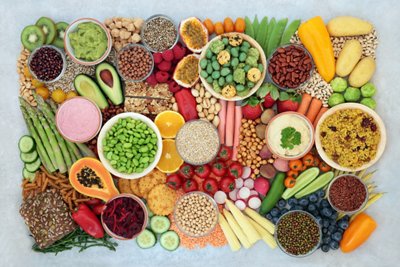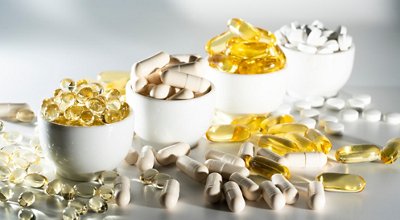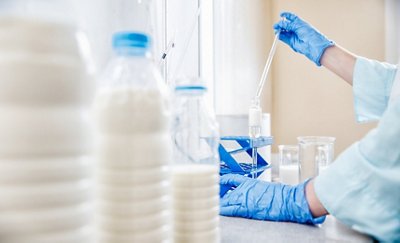Food Safety and Quality Trends - What's on the menu for 2024?
By the bioMérieux Editors | Reading time: 5 min
PUBLICATION DATE: FEBRUARY 08, 2024
Recent years have required our approach to food safety and quality to adapt significantly. Some shifts have come in response to global events, such as the COVID-191 pandemic, and consumer driven factors also continue to make waves and drive change2. Let’s take a closer look at some of the trends expected to shape this dynamic industry over the next 12 months.
Trend Number #1 – New consumer habits and dietary movements
Food for the body and mind
Research shows that we are more aware than ever that leading a healthy lifestyle can prevent health problems3 and consumers today are trialling a wide variety of diet and lifestyle changes as a result4.
For example, a survey on consumer food choices highlighted that 70% of respondents want to be healthier, and half say healthy eating is a top priority for them5.

A range of global food and drink ‘movements’ are helping consumers make more mindful food choices. One successful trend is the plant-based diet.
While some people opt for the vegan lifestyle for ethical or environmental reasons, many also choose an animal-product free diet for its perceived health benefits. Experimental data has shown that it can help with weight loss6. With global retail sales of plant-based meat products at $6.1 billion7, veganism is a movement that is likely to continue to grow in 2024.
Another popular food movement predicted to grow further is the rise of gluten-free foods. This market is projected to be valued at $14 billion on the next eight years, more than double its 2022 value8.
The rise of low-alcohol alternatives
An increasing awareness of the potential negative impacts on health, could be why we are seeing no and low alcoholic beverage sales steadily increasing9, particularly in younger age groups. The IWSR drinks market analysis says that reduced restrictions on no alcohol product sales means the industry is well-positioned to take advantage of online and direct-to-consumer demand in the near future9.
Expansion of nutraceuticals usage

With a continued focus on preventive health, personalised nutrition and natural remedies, the field of Nutraceuticals may also become even more popular in the future10.
Nutraceuticals are defined as any product derived from food sources with extra health benefits in addition to their basic nutritional value and can include dietary/food supplements. Nutraceuticals have received recognition for their nutritional benefits along with their therapeutic effects and safety profile11.
Addressing the risk of contamination
Whilst dietary modifications such as the above are intended to positively impact health and wellbeing, such changes can also create dietary risks arising from potential contaminants found in food12. To continue to adequately protect consumer health, manufacturers across the food safety industry are adapting their testing processes.
Custom molecular assays13 for example, are tailored tests designed for the detection or analysis of specific molecular targets within a biological sample and are used when investigating new products. Other testing examples include microbial identification; the process of identifying microorganisms, such as bacteria, viruses and fungi, and pathogen detection; which confirms the presence of disease-causing microorganisms.
Trend Number #2 – The growing role of technology and AI in our food systems
As well as consumer food and drink trends, technological developments could aid the food industry’s evolution in 2024, and further support food safety standards around the world.
Food innovation community EIT Food says that digital technologies are becoming increasingly critical for ensuring transparency, resilience and fairness across the food system14. These principles contribute to a more sustainable and equitable food system, however this can only be achieved by greater collaboration and knowledge sharing.
The example of FOSCOLLAB
The significance of sharing via connected analytical technologies has been demonstrated by the World Health Organisation’s Food Safety Collaborative Platform (FOSCOLLAB)15. By integrating multiple sources of reliable data, FOSCOLLAB helps overcome the challenges of accessing key sources in a timely manner.
Use of data & genomics
The use of new data and genomics tools in environmental monitoring is also increasingly becoming a valuable practice within food manufacturing plants16. These developments help to enhance the monitoring, analysis and management of environmental factors that can impact food safety.
Expansion of AI
Different technologies are now also being used together to create a comprehensive and advanced framework for ensuring food safety. The increased use of Artificial Intelligence (AI) for example, has been shown to deliver many benefits. These include; improving food yield, advancing food quality indicators and increasing traceability, while decreasing resource consumption, and helping to eliminate food waste17.
Trend Number #3 – Time to think more green
2024 could also be the year we get the balance right between food safety and environmental impact.
A 2023 Buying Green Report, based on a survey of more than 9,000 consumers across Europe, North America and South America, showed that 82% of respondents are increasingly willing to pay more for products in sustainable packaging, up four points from 202218.
Importance of clean labelling
This interest in sustainability is reflected in the growth of the clean labelling initiative, which emphasises transparency and simplicity in food product labelling. Clean labelling however is not regulated by a standard or authority, and interpretations of what constitutes "clean" can vary, so the coming months present an opportunity to develop a standardised approach.
Local is the future
We can also expect further debate about how to decentralise our food systems and produce a greater proportion of our food locally. The Sustainable Food Trust says that almost half of the world’s habitable land is now farmed to feed our global food production system19.
Consumer wants, needs and buying habits are evolving fast, and so the industry’s approach to food safety and quality needs to keep up with the pace of change. Understanding the three themes discussed will help the sector to stay ahead of the curve, be prepared for the future and embrace what lies ahead in 2024 and beyond.
References
[1]. Food Safety Magazine, August 2023. Top Food Safety Priorities—Where are We Post-Pandemic? Available at: https://www.food-safety.com/articles/8799-top-food-safety-prioritieswhere-are-we-post-pandemic. Last accessed January 2024.
[2]. Institute for the Future website 2018. Future Food Experiences: Designing Good Food for the 21st Century. Available at: https://legacy.iftf.org/foodexperiences/ Last accessed January 2024.
[3]. Nutritional Outlook, February 2022. Playing the Long Game: Will consumers continue prioritizing immune health support in the long-term? Available at: https://www.nutritionaloutlook.com/view/playing-the-long-game-will-consumers-continue-prioritizing-immune-health-support-in-the-long-term Last accessed January 2024.
[4]. Statista website, 2020. U.S. consumers trying to have healthy eating habits 2017. Available at: https://www.statista.com/statistics/244818/efforts-of-us-consumers-to-be-on-a-balanced-diet/ Last Accessed January 2024.
[5]. McKinsey & Company website, October 2022. Hungry and confused: The winding road to conscious eating. Available at: https://www.mckinsey.com/industries/consumer-packaged-goods/our-insights/hungry-and-confused-the-winding-road-to-conscious-eating#/ Last accessed January 2024.
[6]. Kahleova H, Fleeman R, Hlozkova A, Holubkov R, Barnard ND. A plant-based diet in overweight individuals in a 16-week randomized clinical trial: metabolic benefits of plant protein. Nutr Diabetes. 2018 Nov 2;8(1):58.
[7]. Good Food Institute website, April 2023. 2023 outlook: The state of the plant-based meat category. Available at: https://gfi.org/blog/2023-outlook-the-state-of-the-plant-based-meat-category/ Last accessed January 2024.
[8]. Statista website, December 2023. Gluten-free foods market in the U.S. - statistics & facts. Available at: https://www.statista.com/topics/2067/gluten-free-foods-market/#topicOverview Last accessed January 2024.
[9]. IWSR website. Key statistics: the no-alcohol and low-alcohol market. Available at: https://www.theiwsr.com/key-statistics-the-no-alcohol-and-low-alcohol-market/ Last accessed January 2024.
[10]. Nutritional Outlook, January 2024. 2024 Nutraceutical and Natural Product Industry Outlook: Insights from Nutritional Outlook’s Editorial Advisory Board, Part 1. Available at: https://www.nutritionaloutlook.com/view/2024-nutraceutical-and-natural-product-industry-outlook-insights-from-nutritional-outlook-s-editorial-advisory-board-part-1 Last accessed January 2024.
[11]. Puri V, Nagpal M, Singh I, Singh M, Dhingra GA, Huanbutta K, Dheer D, Sharma A, Sangnim T. A Comprehensive Review on Nutraceuticals: Therapy Support and Formulation Challenges. Nutrients. 2022 Nov 3;14(21):4637.
[12]. Food Authenticity Network website, March 2022. Thinking about the future of food safety – A foresight report. Available at: https://www.foodauthenticity.global/blog/a-new-fao-publication-thinking-about-the-future-of-food-safety-a- Last accessed January 2024.
[13]. Biomérieux website. Custom Molecular Assays - The xPRO™ Program. Available at: https://www.biomerieux.com/nl/en/our-offer/food-safety-and-quality/custom-molecular-assays.html Last accessed January 2024.
[14]. EIT Food website. How can digital technologies increase food system transparency, resilience, and fairness? Available at: https://www.eitfood.eu/blog/how-can-digital-technologies-increase-food-system-transparency-resilience-and-fairness Last accessed January 2024.
[15]. World Health Organisation website. Food Safety Collaborative Platform (FOSCOLLAB) webpage. Available at: https://apps.who.int/foscollab Last accessed January 2024.
[16]. Food Manufacture, June 2023. Leveraging genomics in microbial risk management. Available at: https://www.foodmanufacture.co.uk/Article/2023/06/07/using-genomics-for-microbial-risk-management-in-food-and-drink-production?utm_source=copyright&utm_medium=OnSite&utm_campaign=copyright Last accessed January 2024.
[17]. Liu Z, Wang S, Zhang Y, Feng Y, Liu J, Zhu H. Artificial Intelligence in Food Safety: A Decade Review and Bibliometric Analysis. Foods. 2023 Mar 14;12(6):1242.
[18]. Trivium Packaging website. 2023 Buying Green Report. Available at: https://buyinggreen.triviumpackaging.com/ Last accessed January 2024.
[19]. Sustainability Food Trust website. Measuring sustainability. Available at: https://sustainablefoodtrust.org/our-work/measuring-sustainability/ Last accessed January 2024.
YOU MAY BE INTERESTED IN THESE ARTICLES
SHARE THIS ARTICLE:
- Food Safety

%20-%20INDUSTRIE%20AGROALIMENTAIRE?qlt=85&ts=1693394204022&dpr=off)
